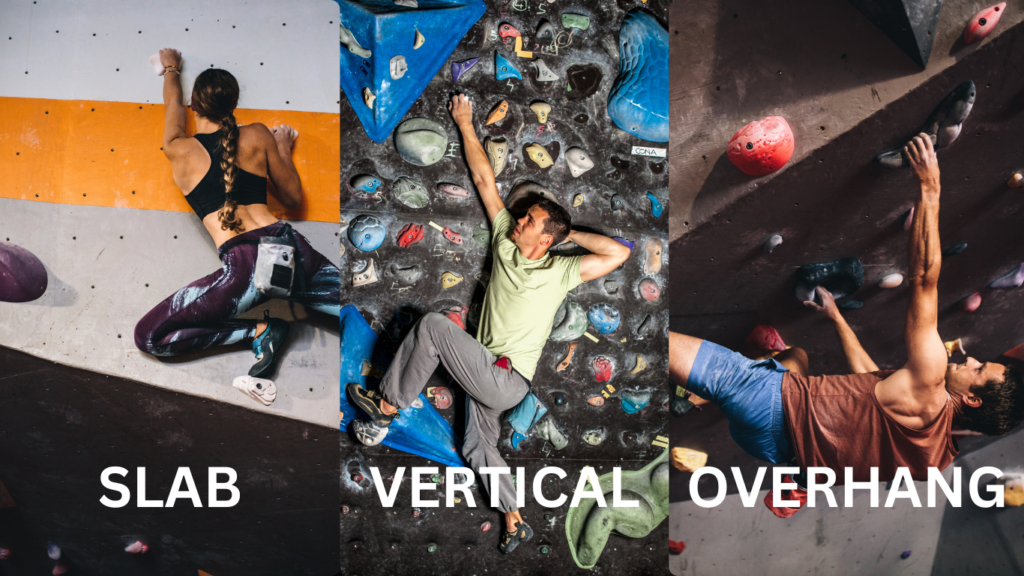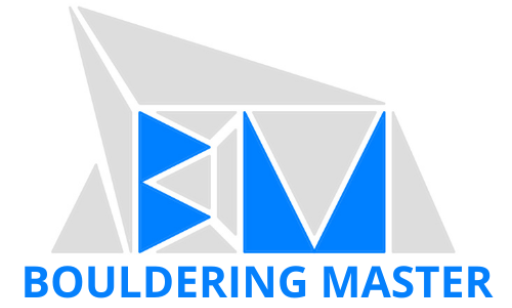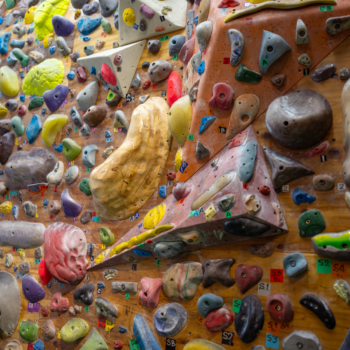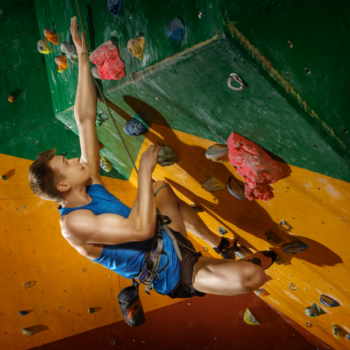Top 3 Bouldering Wall Types: Comprehensive Guide
Table of Contents
What are the bouldering wall types? Bouldering walls come in all shapes and sizes, and each type of wall presents unique challenges and opportunities for climbers to hone their skills. There are three main bouldering wall types: slab, vertical, and overhang.
The Different Bouldering Wall Types:

Slab Walls
Slab Wall, aka the wall that you lean forward onto, is any wall angled less than 90 degrees. They are often smooth and have very few features or holds. This requires the climber to have a good sense of footwork or balance compared to other types of walls that may require more brute strength. Climbers learn to keep their center of gravity over their feet, relying heavily on short steps and friction-dependent moves to navigate the bouldering problem. Even though the key to slab is in the legs, keeping stable hands and arms to maintain control of your balance is also important.
- Practicing Footwork and Balance: Using a slab wall is a great way to practice your footwork and balance. They are less steep than other types of bouldering walls and require climbers to use precise footwork to stay on the wall. An important technique to master with slab walls is smearing. This technique involves the climber relying on the friction created between the sole of the climbing shoe and the rock or wall. Tip: Keep your heels low to increase friction and decrease the chance of slipping.
- No holds? Slabs are a great way to practice palm press, which involves pointing your fingers downward and pressing the palm of your hand onto the wall. This technique can allow you to switch holds or move to a high foot with more balance and precision.
Vertical Walls
Vertical walls are angled at or approximately 90 degrees, meaning they are exactly or almost completely vertical. It’s the most common type of bouldering wall and is great for practicing all kinds of basic climbing techniques like hand and foot placement, body positioning, and movement.
- Practice Various Essential Techniques: A lack of overhang or steep angles can allow climbers to practice techniques such as dynos (dynamic moves), drop knee, or lock off more effectively. Furthermore, vertical walls offer the advantage of replicating the type of climbing found on many traditional outdoor routes making the practice very relevant to real-world climbing scenarios.
Overhanging Walls
Overhanging walls are bouldering walls angled more than 90 degrees, making them one of the most difficult types of bouldering walls. In contrast to slab and vertical walls, overhangs require the climber to focus on keeping their hips into the wall by twisting and keeping their arms straight. It requires exceptional strength and a good command of various climbing techniques to navigate the bouldering problems. You’ll find that overhanging walls are sometimes designed with a variety of features, such as roof sections, tufas, or other protrusions to add complexity.
- Building Upper Body Strength: Overhanging walls provide a challenging and intense workout that targets the muscles in the arms, shoulders, back, and core. This high level engagement of certain muscles is not something you would generally encounter on the other walls, making it a great place to build up upper body strength.
- Overhanging wall is also a good place to practice specific feet techniques, such as heel hooks and toe cams. This wall provides situations that are ideal for using these moves to engage holds and maintain precise foot placement.
There are many different bouldering wall types, each with its own unique features and uses. Whether you are a beginner or an experienced climber, there is a bouldering wall out there that will suit your needs and help you develop your skills It is important to not be afraid to try out the different bouldering walls because they are designed to challenge you, help you develop new skills, and build strength.
Want to learn about the various climbing holds you might encounter on bouldering walls? Check out our article How to Master Bouldering Holds





